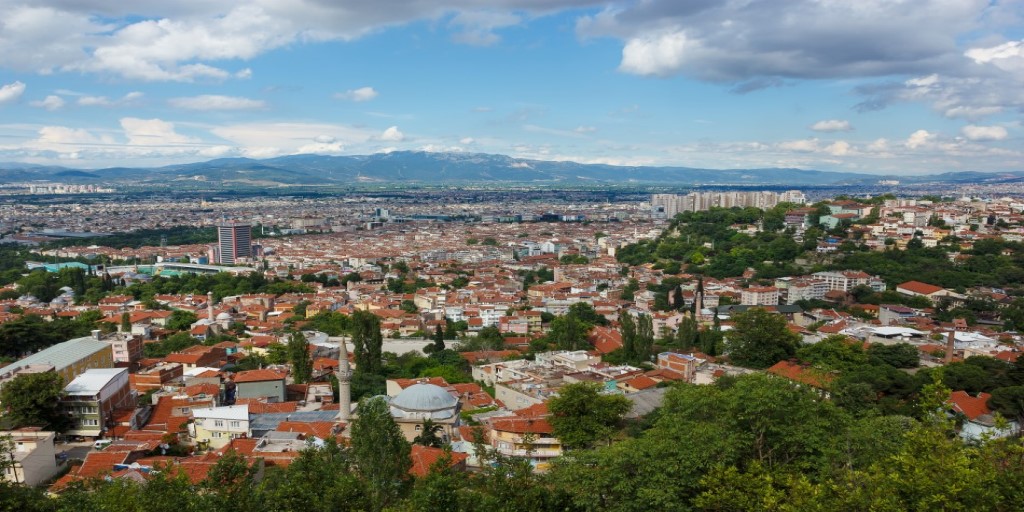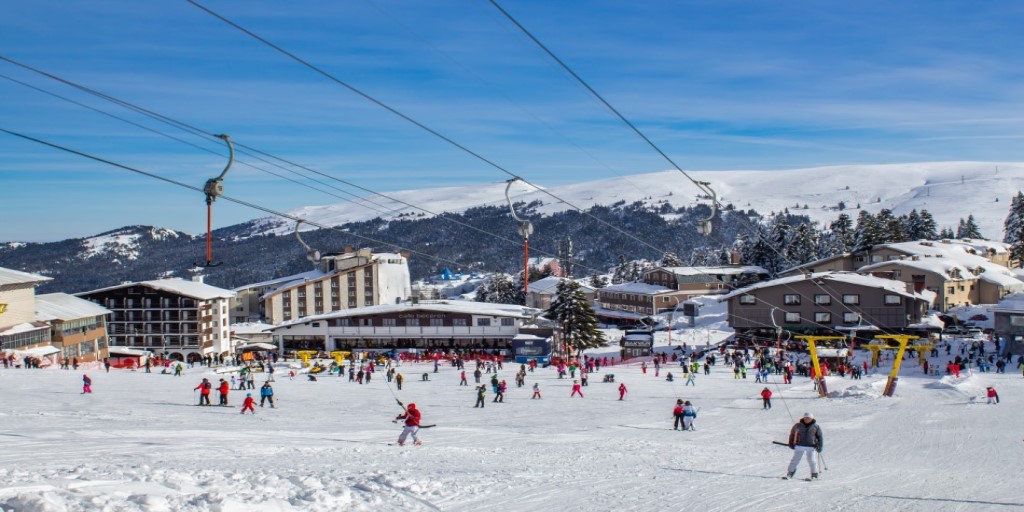Bursa and Mt. Uludag, Turkey
Bursa is the second most populous city in the Marmara Region and the fourth most populous country in the world. Bursa is center of attention among foreign tourists as well as local tourists. Bursa has been home to many civilizations throughout history and is the capital of the Ottoman Empire. As a city that draws attention with its magnificent structures bearing traces from the period, it comes into prominence. With mosques, social complex, and shrines give a sense of journey in history.To visit Bursa’s UNESCO World Heritage sites is to take an adventure into an integral part of its history and culture. Inscribed in 2014, eight sites within Bursa and the nearby Cumalikizik village are now under protection status to preserve them for future generations. Their official status also aids awareness of their existence and reflects their importance.

Sitting in Northern Turkey, the UNESCO status has boosted Bursa’s tourism industry, although it has for many decades been a favourite getaway place for Istanbul locals. But to understand why the UNESCO sites are so important, it is worth looking at the criteria that gained them entrance to the world heritage list.
UNESCO stands for the United Nations Educational, Scientific, and Cultural Organisation. They say for them to include any site around the world, it must show universal standing and fulfil at least one out of ten criteria. A few examples include representing creative genius, exchange of human values, architectural or technology developments, and representing a unique culture. Bursa does all this and more.
About Bursa: Birthplace of the Ottoman Empire
Bursa’s nickname is the birthplace of the Ottoman Empire, but that is not the case. The ruling Ottoman sultans were conquering places before then, but in 1326, they rode in and captured Bursa from the Byzantine empire. In years to follow, as they invested in Bursa, because of its close distance to Istanbul, the empire thrived in every aspect of life. Architecture came to the forefront as they built grand mosques, kitchens, and schools.
Established as the capital from which they ruled over their lands, it maintained great prominence and fame until Mehmed the Conqueror rode into Constantinople in 1453. During this time, the city also excelled in silk production and was a prominent trading port for people from all around the world. Many of the buildings on the UNESCO World Heritage list date from this period.
Bursa’s UNESCO World Heritage Sites
Five sites; Orhan Gazi, Hudavendigar, Yildrim, Yesil, and Muradiye are kulliyes. This ancient form of architecture gained popularity during the Ottoman Empire and during their time in Bursa. The concept of a kulliye is a mosque that forms more than one function; hence it also includes schools, kitchens, public baths, and other buildings that served needy members of society. The kulliyes of Bursa are notable examples of this now-defunct architectural style.
Out of them all, the first includes Bursa’s famous Grand mosque with its many domes. On many occasions, the tombs of sultan sit in the kulliye they commissioned but with Orhan Gazi, his tomb is separate hence makes up the sixth UNESCO site. Sitting within Tophane park, they rebuilt the tombs in the 19th century following a devastating earthquake. Likewise, the seventh site, the Hudavendigar Turkish bath sits a short distance away from the main kulliye.
The eighth site, that is Cumalikizik village sits away from the main city centre but in its prime acted as a food source for the palace and central residents. These days, life is much quieter and although tourists often crowd the narrow village streets, they need only look left or right to see prime examples of Old ottoman houses. Many locals also say the traditional Turkish breakfast served up is second to none. Cumalikizik still maintains much of its village culture and is an excellent place for foreign tourists to get an introduction of Turkish values and traditions.
The Bursa Archeology Museum
Ataturk Museum
Bursa City Museum
Green Mausoleum
There are also plenty of mosques scattered all over the town, most remarkable of which is the Ulu Cami, built in the late 14th century. After a day tour around Bursa, tourists ride a cable car hiking up the slopes of Uludag for a skiing weekend, one of Bursa’s biggest attractions.
Other Places to Visit in Bursa
Saitabat Waterfall
Nature lovers must not miss Saitabat, a gushing 3-feet waterfall that originates from a canyon. It got its name from the Saitabat variety of pigeons that flourishes in the area. It is found at the foot of Mt. Uludag, about 12 kilometers from Bursa.
There are water sports that you may enjoy in the Saitabat Waterfall, but what actually draws people to the falls is the chance to eat a freshly-caught, grilled on-site trout that is cooked with butter, so you may want to time your visit around lunch or late afternoon. Make sure to bring your camera because photo ops are a must. (Image Credit)
Koza Han
The silk cocoon industry from China found its way to Bursa in the late 15th century, with the Koza Han being the center ever since. Koza Han, which translates to “silk cocoon market”, is where silk cocoon farmers deposit their products for spinning and the end product of which can be bought from the various shops found in the center.
People go to the Koza Han to buy silk, but the design of the han itself is worth seeing as well, especially its courtyard. There are a few cafes outside the Koza Han, where people can enjoy Turkish coffee and delicacies.
Cumalikizik Village
What you would like about Cumalikizik Village is that no matter how plenty of tourists visit the historical place, it still has been able to preserve its ancient structure- in all its charm and glory. Its origin can be traced to the Ottoman Empire’s period and now serves as an ethnography museum in itself.
The main attraction at the Cumalikizik Village is the beauty of the 270 houses that are made out of adobe, rubble stones and wood. Also interesting are the Byzantine church ruins that were discovered in 1969. Cumalikizik Village is found at the foot of Mount Uludag, about 10 kilometers east of Bursa. (Image Credits)

Also of Interest
Skiing in Uludag: Many people associate Turkey with sun, sea, and sand, yet it has an established skiing industry of which Bursa is a prominent part. In this article, we look at why Uludag mountain stands out, how to get there, and what else to do apart from skiing.
Places in Bursa: Alongside Bursa’s UNESCO World Heritage sites, many other places delight tourists and locals alike. After touring the above sites, visit museums, hot springs, waterfalls, villages and much more to see Bursa in all its glory.
We design different Bursa Tours for different types of tourists